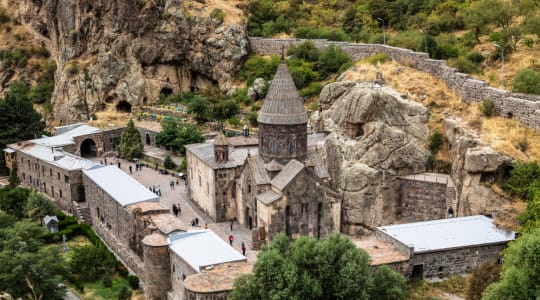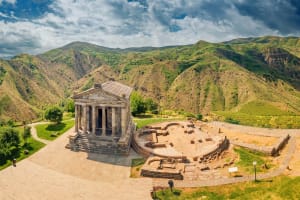
Geghard is a medieval monastery complex located in the Kotayk Province of Armenia, about 40 km east of the capital city Yerevan. The name "Geghard" means "spear" in Armenian, which is a reference to the spear that was allegedly used to wound Jesus during his crucifixion.
The monastery complex was founded in the 4th century AD and was rebuilt in the 13th century, when the main cathedral, the Church of the Holy Mother of God, was constructed. The church is partially carved out of the surrounding rock and features intricate stone carvings and frescoes.
One of the main attractions of the monastery is the Geghardavank, a natural cave that was used as a place of worship by the early Christians. The cave is renowned for its acoustics and is often used for musical performances.
Another important feature of the monastery is the holy spring that flows through the complex. The water is believed to have healing properties and is used for baptisms and other religious ceremonies.
In 2000, Geghard Monastery was listed as a UNESCO World Heritage Site, recognizing its cultural significance and outstanding universal value. It is one of the most visited tourist destinations in Armenia and a must-see attraction for those interested in history, culture, and architecture.
Explore Near Geghard monastery
Discover 5 attractions, 5 cities, and 1 airport within 75km. Perfect for planning day trips, finding connecting flights, or discovering new destinations to explore during your visit.
Nearby Attractions & Places to Visit
5 destinations within 8.1km - 26.3km from your location





Nearby Cities Worth Exploring
5 destinations within 22.0km - 26.3km from your location
Airports Near Geghard monastery
1 destination within 35.9km from your location
Cross-Border Adventures Near Geghard monastery
Discover cross-border adventures near Geghard monastery. Explore neighboring countries with similar attractions and extend your travel experience across borders.



